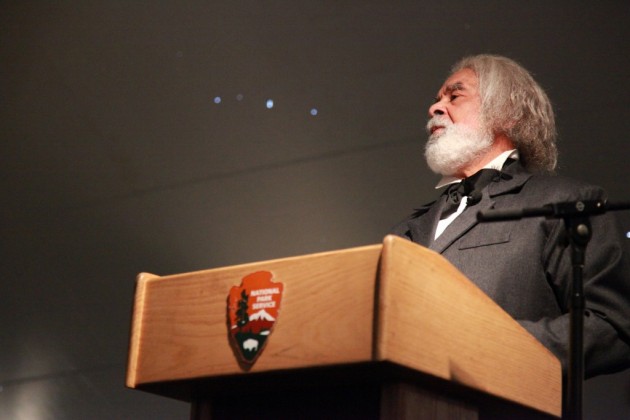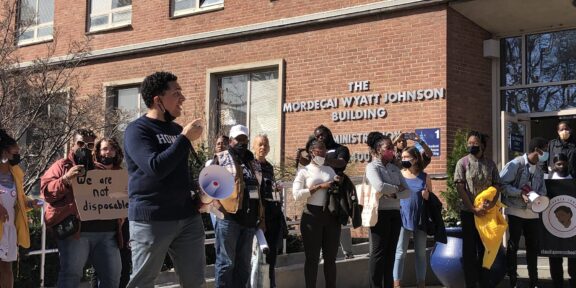It’s been months since the plans to renovate 2012-14 Kalorama Road NW were first approved by the Historic Preservation Review Board (HPRB) and the Historic Preservation Office (HPO.) However, the onslaught of objections from residents near the project that followed has left the project at a stalemate.
The two buildings are adjoining colonial revival-style homes located in the Kalorama Triangle Historic District, cradled within the affluent neighborhoods of Adams Morgan and DuPont Circle. The project proposes to erect rear additions to the homes, creating eight condos at 2012 and nine condos at 2014.
Aside from the owners potentially grossing a lot of money from the additional units, the advantage of the project is aesthetic. The project entails a restoration of 2014’s facade, which has been altered from its original 1909 state. A gardener and a fresh coat of paint look slightly overdue for the buildings that stand next to a grandiose stone building reminiscent of upper east-side Manhattan.
The original HPBR Staff report and recommendation says, “the project will offer a significant preservation benefit in the restoration of the façade and front yard of 2014, greatly enhancing the historic presence of the building on the street.”
The concept of the project was approved by the HPRB at a meeting in October 2012 and is supported by the HPO, although neighboring apartment complexes opposed it.
Additional ill feelings came from neighbors upon finding out that a required HPO form submitted by the developers, Square 134 Architects and Lock 7 Development, misrepresented them by saying that they had been informed of the project in advance. But neighbors say the first thing they heard about the project was its approval meeting.
Oct. 18, 2012 is when Dennis James, the president of the Kalorama Citizens Association, emailed members of the KCA living in 2101, asking if they had been aware of the project proposed next door to them, after hearing about it himself from the developers just a few days before. The answer was no. A week later the project’s concept had been approved by the HPRB without any neighbor contribution.
Noise, light and parking are the front-runners among complaints. Neighbors are particularly worried about the potentially very loud 19-unit heating and air conditioning system that will be lumped together on the top of the house. Mary McReynolds, a 35 year resident of 2101 Connecticut Ave Cooperative Apartments adjacent to 2014 and head of the appointed committee for the response to the project from apartments near the project, says that some areas of 2101 will lose six to seven hours of direct sunlight.
“Where are people going to park?” asked Noreen Ali, the receptionist at the 2101 Connecticut Ave, who finds the idea of construction “nightmarish,” simply due to the congestion.
2101 Connecticut Ave is a grand apartment complex, nine stories tall with over 100 units deep on the intersection of Kalorama and Connecticut, and it’s not the only apartment complex in the area. In fact, 2012 and 2014 are surrounded by apartment buildings and are among the few single-family homes on the block.
On a recent weekday at 4:30 p.m. in the 2000 block of Kalorama Road NW, a narrow two way street, was congested with parked cars aligned on both sides of the street, cars at the traffic light and a moving truck that took up much of the road. Connecticut Avenue was bustling with a steady flow of traffic.
The residents around the proposed construction site used similar information and examples to build their case. They commissioned the help of the Adams Morgan Neighborhood Advisory Commission, Ward 1 Councilman Jim Graham, architects and other experts to testify in a hearing or lend their support for their cause at a hearing with the HPBR in January of this year.
“The ANC went on record to the Historical board suggesting that the developers application was in error in several areas,” said Commissioner Martis Davis of the Adams Morgan Advisory Commission. “The Board stipulated to those errors and asked the developers to work with the residents.”
Both James and McReynolds acknowledged the changes the developers made in the projects plans. However, they say none of them were meaningful in regards to what they are worried about.
McReynolds compares the concept of the project to a flea giving birth to an elephant.
“If additions were in compliance of the [HPO] guidelines, most of the ripple effects would not even exist,” she said. “The project is simply too big.”
The struggle between the developers and the neighbors project could continue for another couple of months depending on the project’s next HPO review on April 25. Until then neighbors wait patiently to see if their voices made enough of an impact to see significant changes in the project.




